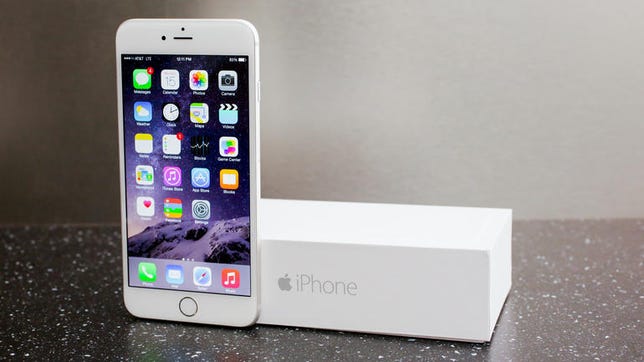
CNET
Apple’s top iPhone market may no longer be the United States.
Set to announce its earnings for the December quarter on Tuesday, Apple could reveal that it sold more iPhones in China than in the US for the first time ever, the Financial Times reported Sunday.
Analysts at UBS predict that China captured 36 percent of all iPhone shipments last quarter, compared with 24 percent in the US. That’s a huge change from the same period last year, when the US held 29 percent of iPhone shipments and China 22 percent.
Creative Strategies analyst Ben Bajarin forecasts that Apple sold 2 million more iPhones in China than it did in North America.
Analysts believe the changeover was initially triggered by Apple’s deal with China Mobile in December 2013 and then boosted by the release of the iPhone 6 across all three of China’s major carriers in October 2014.
In 2011, China became the world’s largest smartphone market and now is home to almost 520 million smartphone users. Apple has been striving the past few years to gain more market share in the country by securing deals with its major carriers. An agreement with the nation’s largest carrier, China Mobile, proved challenging but was key as it provides access to more than 800 million subscribers.
Meanwhile, Apple faced challenges in China getting regulatory approval for its latest iPhones. Though the launch of the iPhone 6 and iPhone 6 Plus was delayed as a result, Apple still saw a jump in sales among Chinese mobile phone consumers.
Phone sales in China grew more than 45 percent annually in November, triggering a record high in monthly sales volumes, according to Counterpoint Research. Counterpoint attributed the gain to “rich urban Chinese consumers” attracted to the new iPhone’s form factor. Apple’s 12 percent market share in China pushed it into third place behind dominant local players Xiaomi and Lenovo.
The quarter is a key one for Apple as it marks the first full quarter in which Apple got to play in the big-screen leagues. Launched in September, the 4.7-inch iPhone 6 and the 5.5-inch iPhone 6 Plus were Apple’s responses to a market in which consumers have increasingly been drawn to large-screened phones. The lack of a big-screen smartphone is one reason Apple had been losing market share and customers to Android vendors such as Samsung, which have have long been offering phones in various screen sizes.
Worldwide forecasts
Globally, Apple is now expected to have sold around 65 million iPhones during the final quarter of 2014, according to the crystal ball of Piper Jaffray analyst Gene Munster.
In an investor’s report released late Sunday, Munster said he has upped his iPhone sales forecast to 65 million from 61 million previously based on supply of the iPhone 6 and iPhone 6 Plus catching up to demand before the end of the quarter. The analyst did note that investors are looking for sales in the range of 65 million to 69 million iPhones for the fourth quarter of calendar 2014, which was Apple’s first fiscal quarter of 2015.
Other analysts and reports are also predicting a stellar quarter for Apple thanks to the new iPhones. Morgan Stanley analyst Katy Huberty is eyeing iPhone sales of 69 million. KGI analyst Ming-Chi Kuo sees iPhone sales surging as high as 73 million, according to AppleInsider, with the iPhone 6 accounting for more than 42 million in unit sales, and the iPhone 6 Plus a little more than 16 million.
Whatever the actual tally, last quarter’s iPhone sales will most certainly outshine the record 51 million iPhones sold in the final quarter of 2013.
Apple isn’t as likely to be as happy with last quarter’s iPad sales, according to Munster. The analyst has reduced his sales forecast for Apple’s tablet to 22 million from 25 million. Munster didn’t give a reason for the cut in his forecast but noted that Wall Street is anticipating iPad sales of around 22.5 million. Unit sales of 22 million would represent a 15 percent drop from the same quarter last year.
Tablet sales have been slowing due to a variety of factors — including more people buying phablet-sized smartphones, such as the iPhone 6 Plus, as an alternative to tablets.
Finally, the Apple Watch is expected to hit the market in March, according to Munster. The analyst is looking for 8 million in sales for the watch’s first full year based on an average selling price of $500. But he believes it could take more than a year for the watch to truly take off among consumers.
“While we continue to believe interest from consumers is tepid given our survey work, we believe that as we get closer to the launch of the watch and have increasing media attention, it will increase both consumer and investor optimism around the worth of the watch. Most specifically, we believe Apple needs to answer ‘What is the value of the Watch?’ Longer-term, we believe the first true breakout quarter for the Apple Watch could be in Dec 2016 as it would give both developers and consumers a little more than a year and a half to understand the watch’s value.”
A spokesperson for Apple declined CNET’s request to comment on Munster’s report.



